
Amolita perstriata is a species of moth in the family Erebidae first described by George Hampson in 1910. The species is found on the Bahamas. Its wingspan is about 22 mm.
Izatha metadelta is a moth of the family Oecophoridae. It is endemic to New Zealand, where it is known from the North Island only. It is rare north of Waikato and the Bay of Plenty.
Glaphyrarcha is a genus of moths in the family Carposinidae. It contains only one species Glaphyrarcha euthrepta. This species is endemic to New Zealand.
Platyptilia hokowhitalis is a species of moth in the family Pterophoridae. This species is endemic to New Zealand. This species has been classified as Data Deficient by the Department of Conservation.
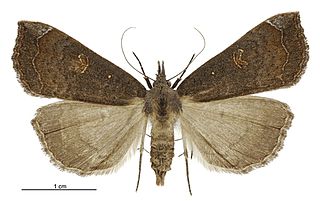
Rhapsa scotosialis, the slender owlet moth, is a moth of the family Noctuidae. R. scotosialis is one of the most common forest moths found in New Zealand.
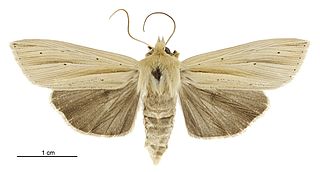
Tmetolophota sulcana is a moth of the family Noctuidae. It is endemic to New Zealand.
Orocrambus punctellus is a species of moth in the family Crambidae. It is endemic to New Zealand. It is classified as "Data Deficient" by the Department of Conservation.

Culladia strophaea is a species of moth in the family Crambidae. It is endemic to New Zealand. The taxonomy of this species is currently uncertain.

Pyrausta comastis is a moth in the family Crambidae. This species is endemic to New Zealand. It has been classified as "nationally vulnerable" by the Department of Conservation.

Proteuxoa comma is a species of moth in the family Noctuidae. It is endemic to New Zealand. This species is very similar in appearance to P. tetronycha.

Austramathes purpurea is a species of moth in the family Noctuidae. It was first described by Arthur Gardiner Butler in 1879 from a specimen collected in Otago. It is endemic to New Zealand.

Xanthorhoe orophyla is a moth of the family Geometridae. It is endemic to New Zealand.

Austramathes pessota is a species of moth in the family Noctuidae. It is endemic to New Zealand.

Asaphodes imperfecta is a moth in the family Geometridae. It is endemic to New Zealand. It is classified as critically endangered by the Department of Conservation.
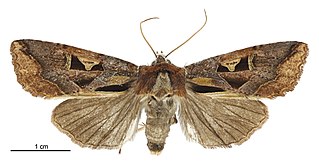
Meterana grandiosa is a species of moth in the family Noctuidae. This species is endemic to New Zealand. It is classified as "At Risk, Relict'" by the Department of Conservation.
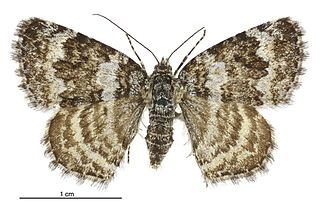
Dasyuris octans is a species of moth in the family Geometridae. It is endemic to New Zealand. This moth is classified as "At Risk, Naturally Uncommon" by the Department of Conservation.
Hydriomena iolanthe is a species of moth in the family Geometridae. It is indigenous to New Zealand. This species is based on a single specimen that is now lost and has not been matched to any known species. As such it is classified as data deficient by the Department of Conservation.
Tingena loxotis is a species of moth in the family Oecophoridae. This species is endemic to New Zealand. It is classified as "Data Deficient" by the Department of Conservation.
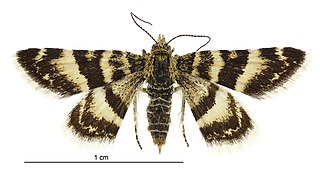
Notoreas ortholeuca is a species of moth in the family Geometridae. It is endemic to New Zealand.

Nivetica nervosa is a moth of the family Noctuidae. It is only found in New Zealand. This species can be found in wetland habitat in the alpine zone of the South Island. It is a small, distinctively patterned moth that is attracted to light. Currently much of its biology and life cycle is unknown.














